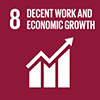Description/achievement of initiative
The Sustainable Skylines Program is designed to use air quality regulatory needs, climate action goals and other local environmental priorities as the catalyst for integrated sustainability actions.
Source: UNCSD Secretariat (2010) Questionnaire for the Member States on Experiences, Success Factors, Risks and Challenges with Regard to Objective and Themes of UN Conference on Sustainable Development (UNCSD)
The Sustainable Skylines Initiative (SSI) is a U.S. Environmental Protection Agency (EPA) program designed to use air quality regulatory needs, climate action goals and other local environmental priorities as the catalyst for integrated sustainability actions. These actions can provide communities with a range of complementary benefits for their people, their prosperity and the planet.
The SSI is a collaborative effort that brings together the resources of the EPA, other government agencies, as well as non profit and private organizations to support individual communities. Initial SSI programs are underway in Dallas, Texas; Kansas City Kansas and Missouri; and Philadelphia, Pennsylvania. SSI programs are designed to meet the local circumstances of participating communities. Each program can also provide lessons that will be shared through and beyond the national SSI program network.
Under the SSI, an area can choose to perform projects from seven categories: renewing community livability, climate change and energy efficiency, land use and transportation strategies, fossil-fueled engine and motor sources, green buildings development, facilities and businesses and innovative and sustainable practices. While the primary focus of SSI is air, communities are encouraged to select activities which will result in synergistic reductions from all medias such as water, hazardous/solid waste, and energy. The SSI is not a regulatory program nor is it an in-lieu of regulatory program. A strong performance accountability mechanism is incorporated into the framework for both the community and all participating partners. This framework can help communities achieve measurable emissions reductions within 3 years.
Implementation methodologies
Arrangements for Capacity-Building and Technology Transfer
Coordination mechanisms/governance structure
Partner(s)

